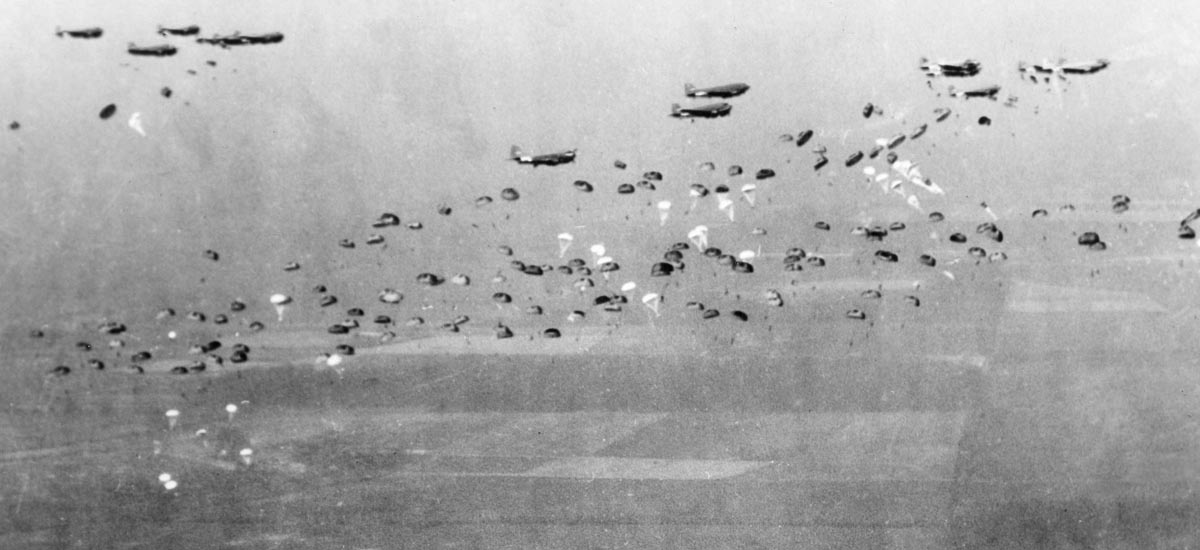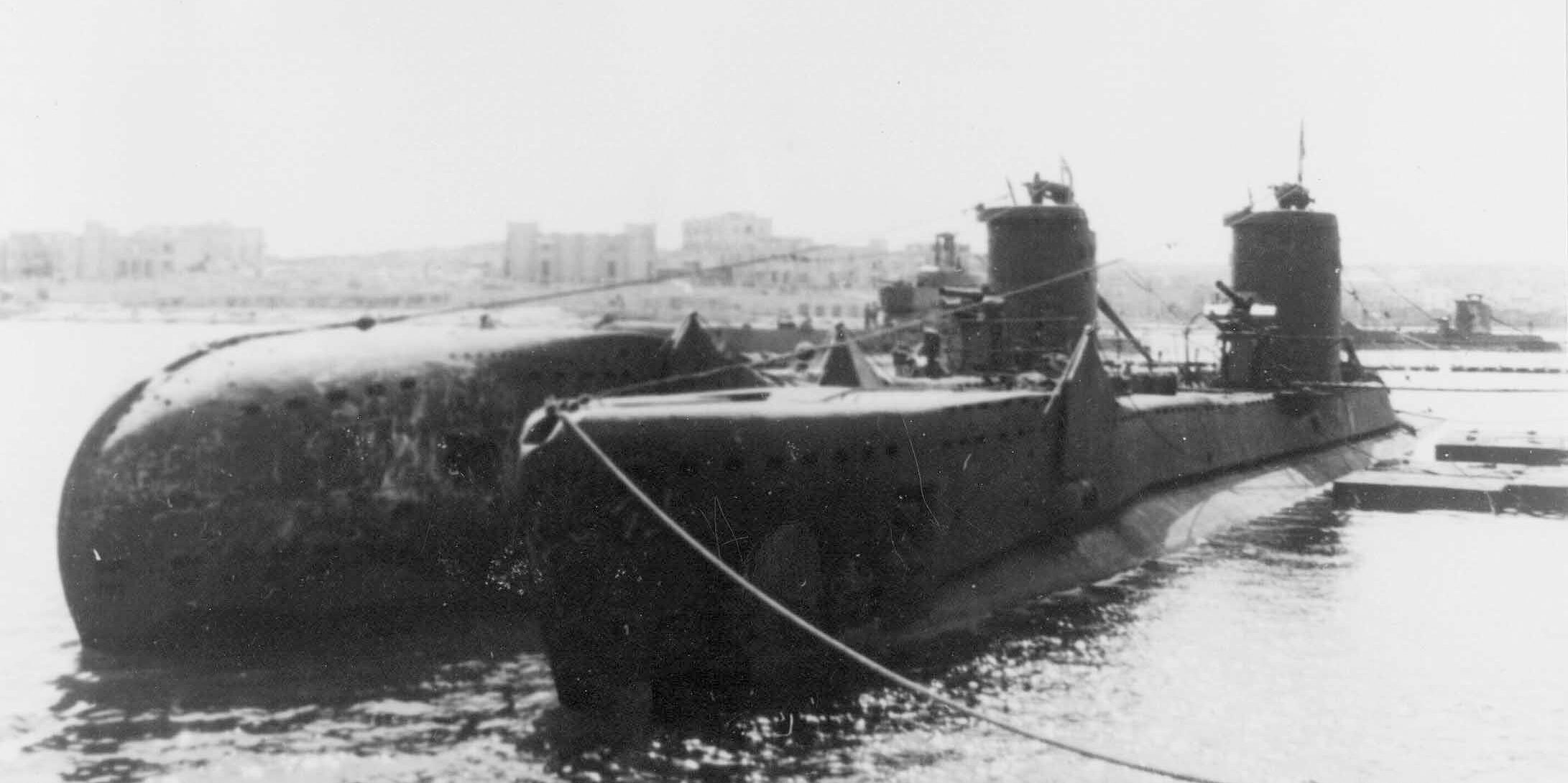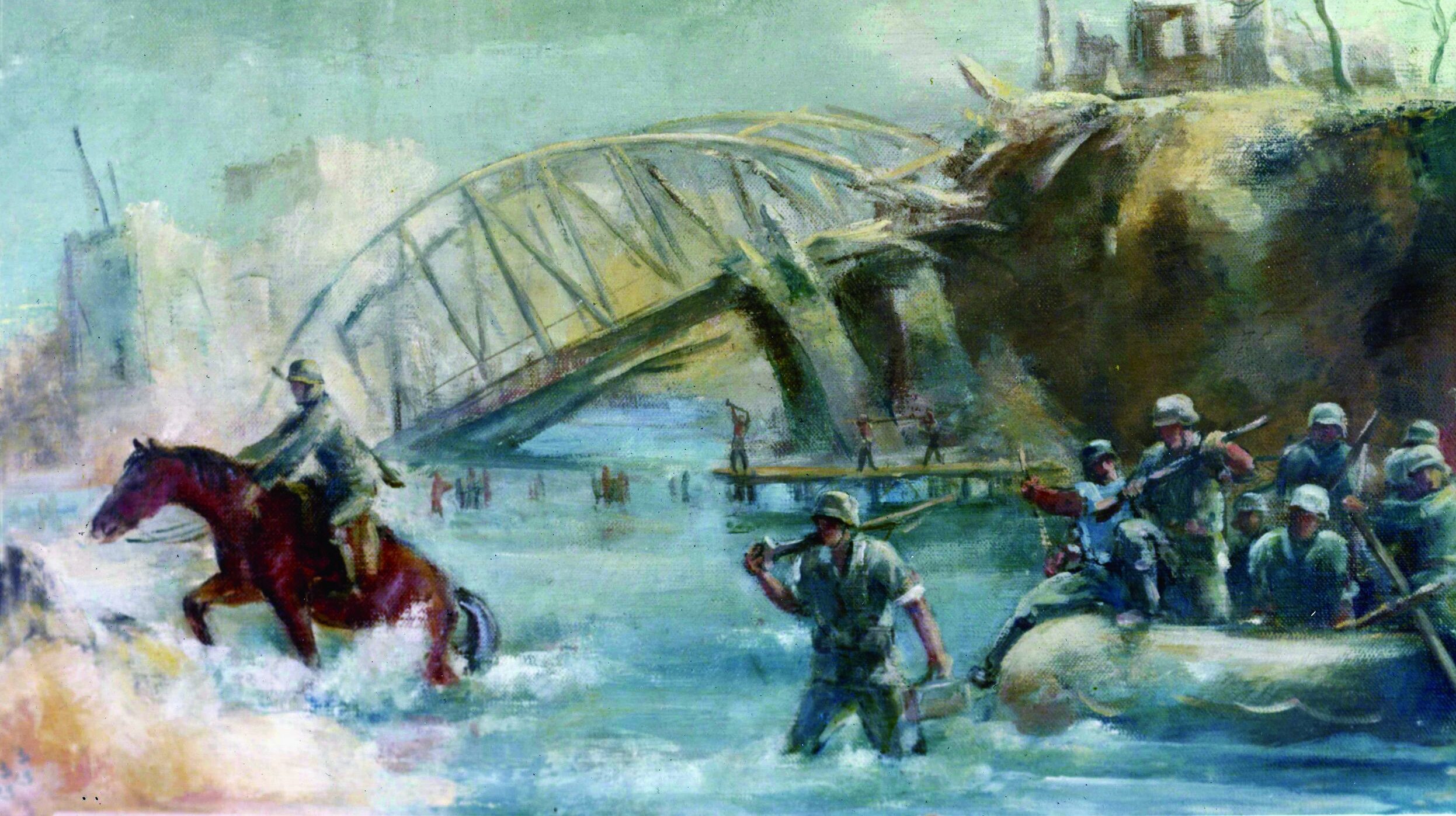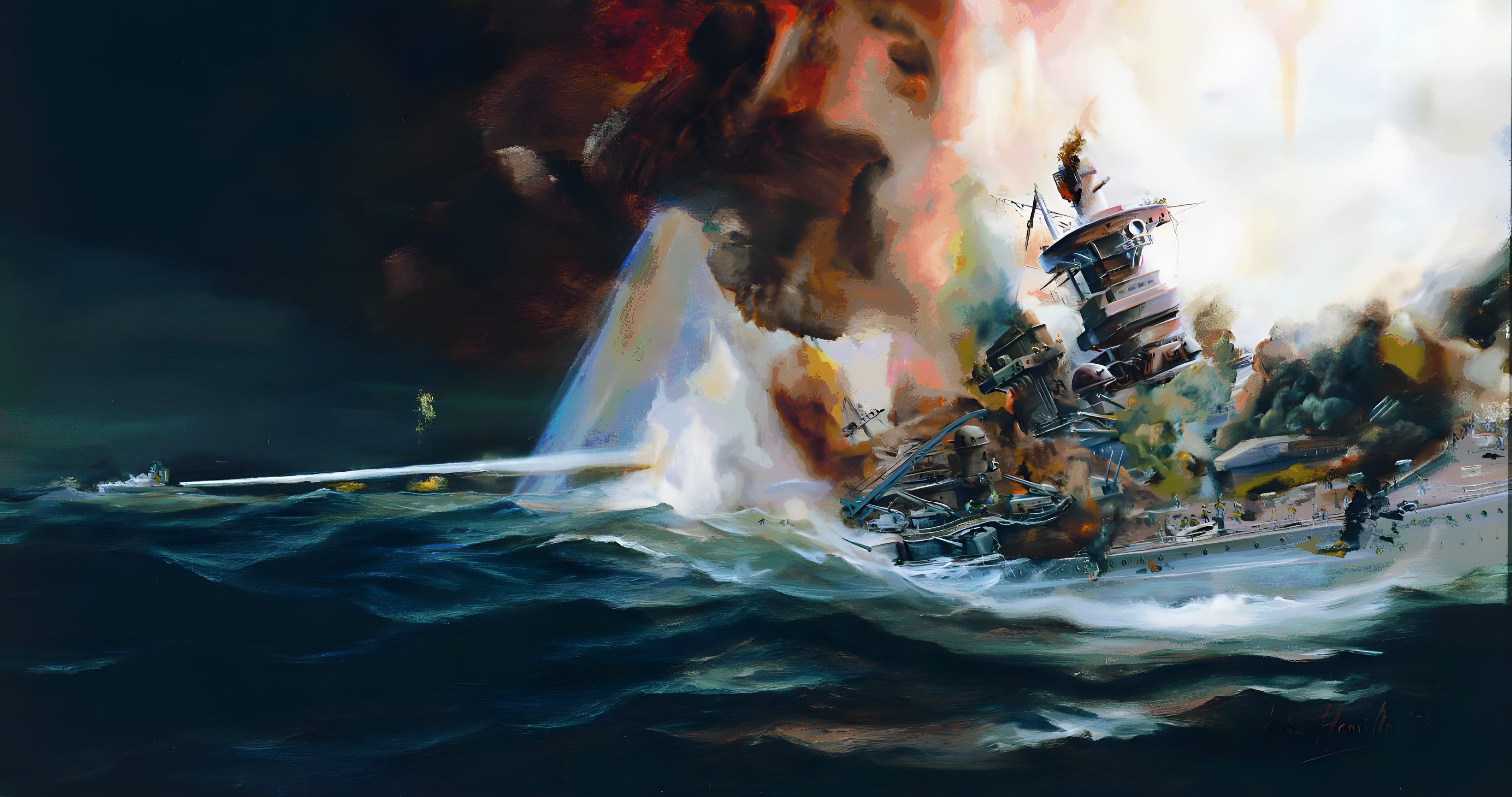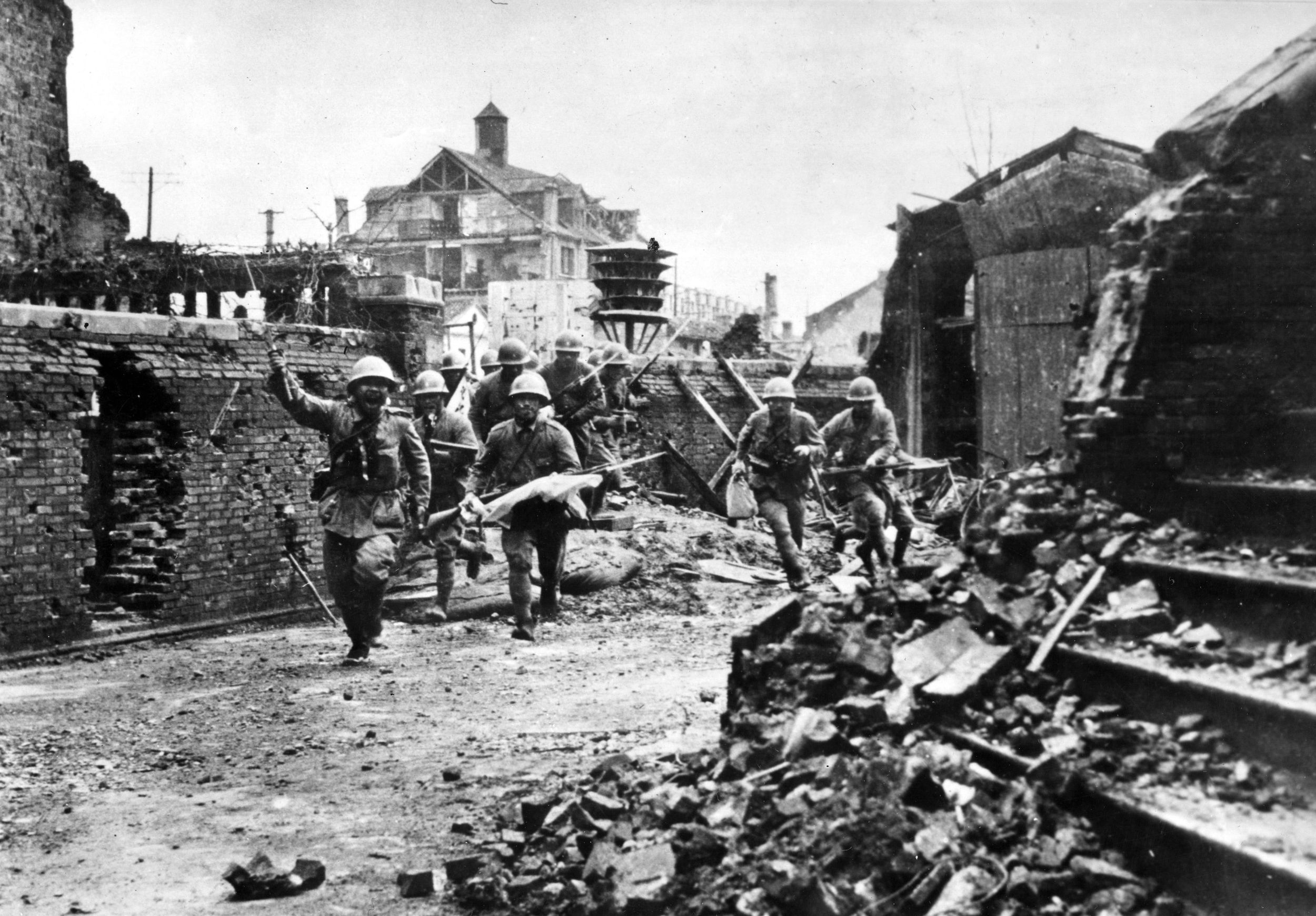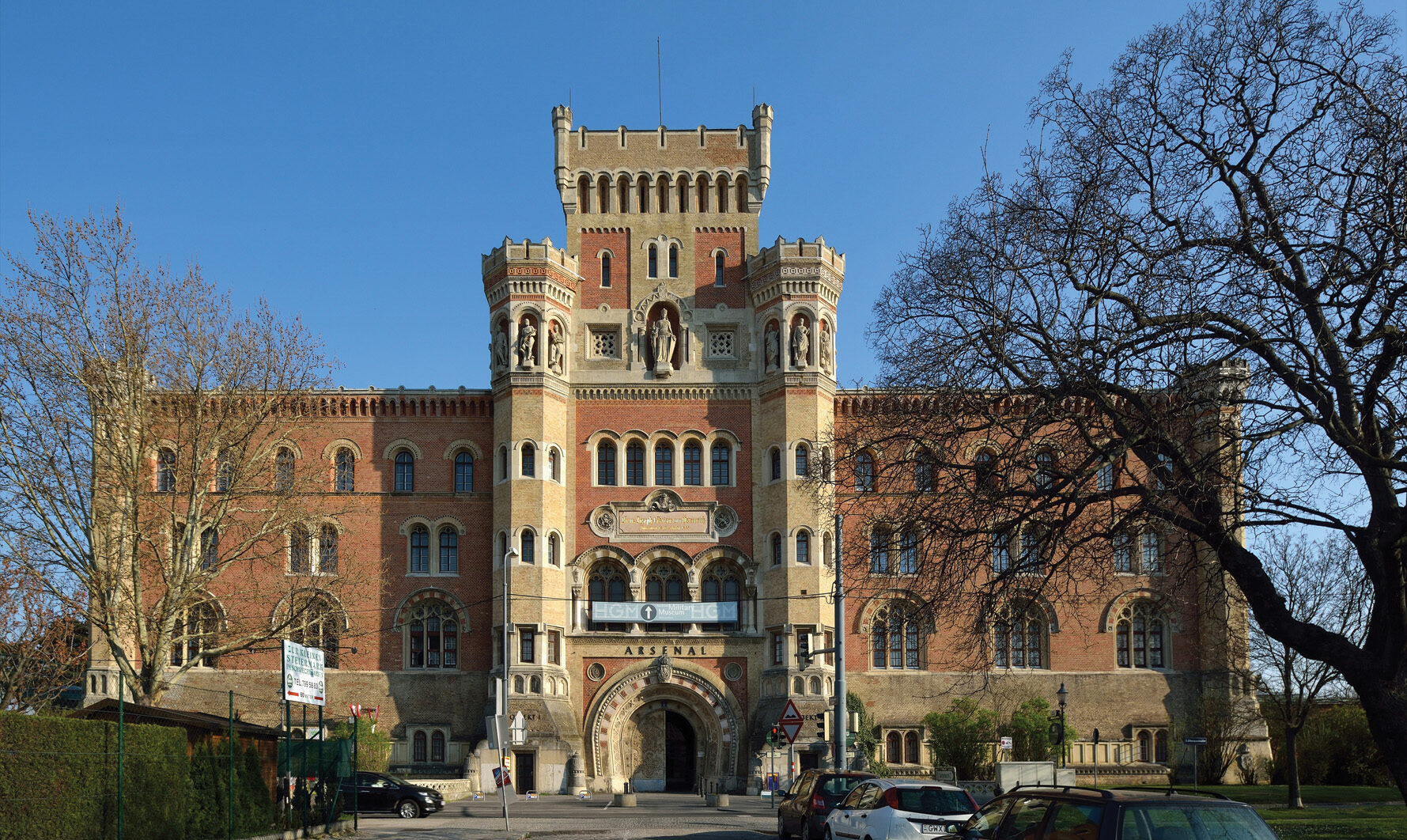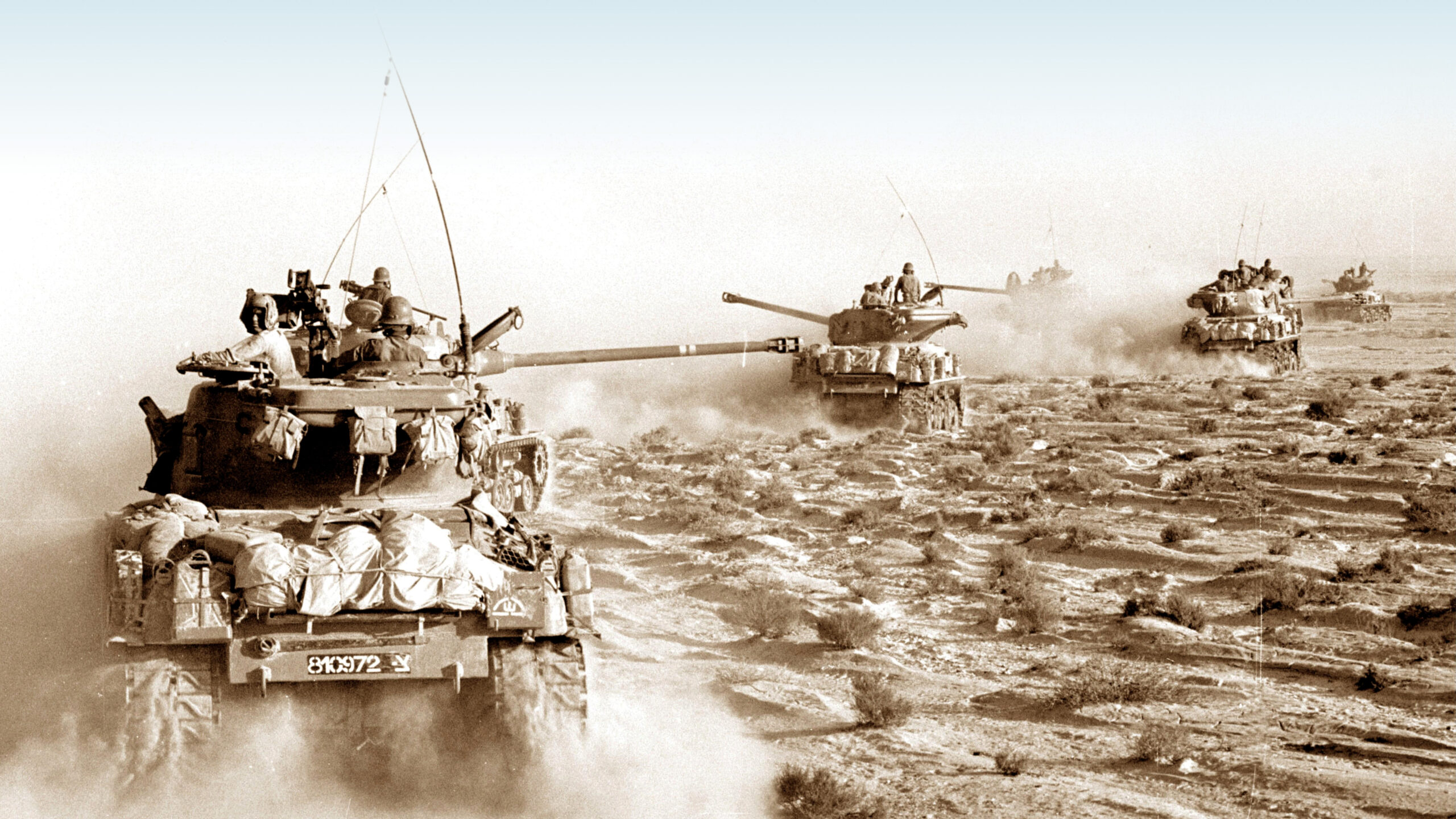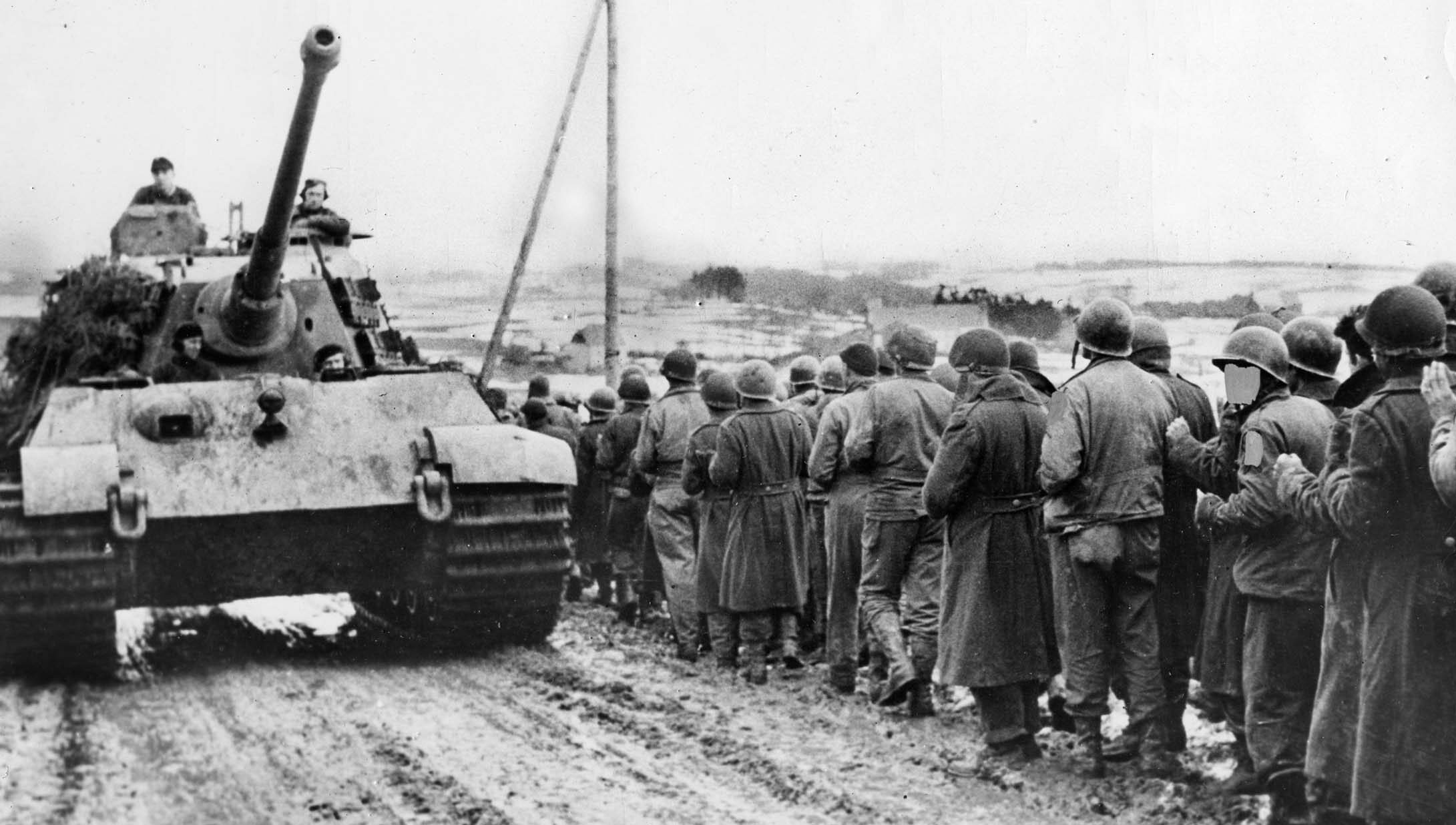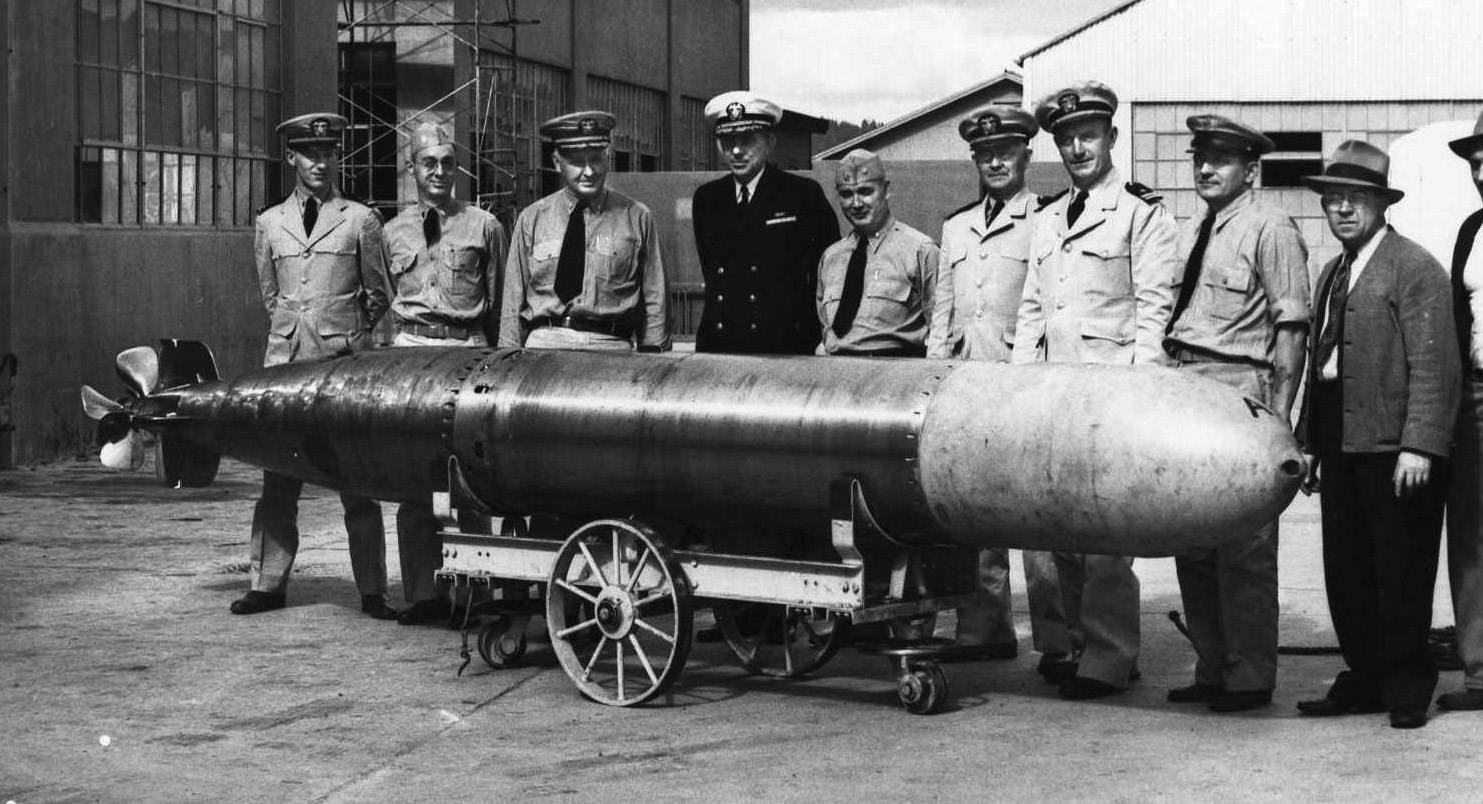By Michael E. Haskew
In the autumn of 1944, even before the failure of Operation Market Garden, the eyes of Allied commanders were on the great Rhine River, and when the time came to cross the last major natural barrier on the German frontier, American airborne troops would play a key role, while also participating in other operations during the last days of World War II.
Even if Market Garden had been successful, it would have allowed only a fraction of the Allied host to cross the mighty Rhine, and in early September, General Omar N. Bradley had considered an airborne operation to facilitate the crossing of his U.S. 12th Army Group.
During the first three months of 1945, Allied troops advanced toward the Rhine, reducing the “bulge” that had resulted from the ill-fated German Ardennes Offensive, which had shown promise in the beginning but ultimately cost the Wehrmacht irreplaceable resources in troops, tanks, and other equipment while hastening the end of World War II in the West.
By the end of February, the west bank of the Rhine was within reach. Field Marshal Bernard Montgomery’s British 21st Army Group was massing in the north, and the successful clearing of the Saar-Palatinate had breached the Siegfried Line and brought Allied forces forward to the Rhine from Holland to the Swiss border. Despite the Market Garden setback, airborne operations were still considered a viable component of concerted efforts to breach the wide river all along the broad Allied front.
However, the electrifying capture of the intact Ludendorff railroad bridge at Remagen on March 7-8, 1945, by the U.S. 9th Armored Division and the subsequent expansion of a bridgehead east of the Rhine eliminated the need for airborne support in the American First Army sector. On March 22, General George S. Patton’s Third Army managed to breach the Rhine at Oppenheim, south of Mainz, without airborne participation.
Patton was delighted to beat his rival Montgomery across the Rhine. Elements of Third Army crossed only hours before Montgomery unleashed his effort in the north, a ground-amphibious operation codenamed Plunderand complemented with a spectacular single-day airborne deployment labeled Operation Varsity.
Overwhelming Allied force was poised to strike deep into Germany in March 1945. A total strength of 85 divisions, including 23 armored and five airborne, were positioned to carry the fight against the Nazis to final victory. In the north, Montgomery’s 21st Army Group was tasked with crossing the Rhine, establishing a secure bridgehead north of the Ruhr—the industrial heart of Germany— and, with the Ninth U.S. Army covering its right flank, preparing for further operations to isolate and reduce the vital region.
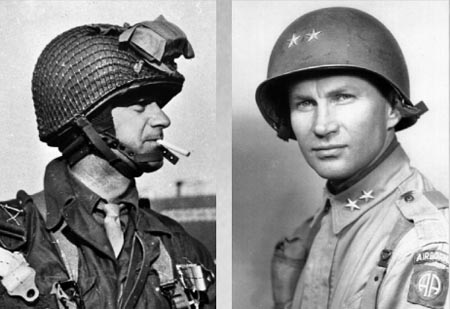
Montgomery originally set the date for Operations Plunder and Varsity for March 15, issuing final orders on the 9th, the same day that the last German forces withdrew from the west bank of the Rhine. The starting date was pushed back several days due to a supreme headquarters directive that further outlined planned objectives. The ground operation was launched on March 23 with elements of the British Second Army crossing the Rhine at 9 PM. The Ninth Army, commanded by General William H. Simpson, began it own amphibious crossing south of the town of Wesel at 2 AM on the 24th.
Although the planners at General Lewis Brereton’s First Allied Airborne Army headquarters had worked on Operation Varsity for several months, the tactical outline was not finalized until early March. Originally envisioned with three airborne divisions, the number of troops had to be scaled back by roughly one-third when it was discovered that existing ground facilities and transport aircraft were not capable of supporting such a large effort.
The operation was then assigned to the British 6th and American 17th Airborne Divisions of General Matthew Ridgway’s XVIII Airborne Corps. The 6th had participated in Operation Overlord in Normandy, while the 17th had fought as ground troops for five weeks in the Ardennes.
During the counteroffensive to reduce the bulge created during Hitler’s failed offensive, the 17th Airborne fought its way through Belgium, forcing enemy troops across the Ourthe River, relieving the 11th Armored Division at Houffalize, and taking Espeler and Wattermal by the end of January. Turning southward toward Luxembourg, the division liberated the towns of Eschweiler and Clerveaux and secured the west bank of the Our River. Prior to being relieved by the 6th Armored Division, troopers of the 17th Airborne had established a limited bridgehead across the Our, near the town of Dasburg, Germany.
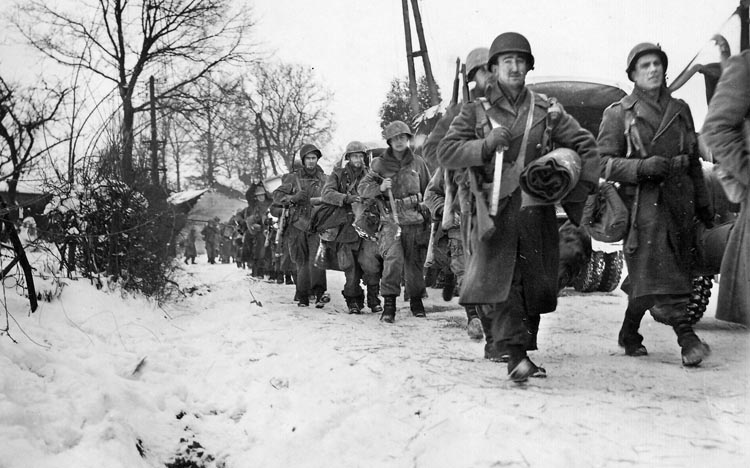
Even with its reduced complement of troops, Operation Varsity remained a tremendous undertaking. The last offensive airborne operation of the war in Europe and the largest single-day airlift of the war, Varsity included 21,680 paratroopers and glidermen, 1,696 transport and 1,348 glider aircraft, and a covering air contingent of 3,000 fighter planes. While more than 1.25 million ground troops were positioned to cross the Rhine, the air-transport armada was taking flight. Eventually, the sky train stretched for miles, from horizon to horizon.
Montgomery had provided only limited direction to the airborne planners, asking simply enough that they support the Second Army and conduct independent operations to reduce enemy strongpoints, disrupt communications, and impede troop movements for up to 10 days. Well before that time, the airborne thrust and ground elements of Operation Plunder were to have linked up. The 6th Airborne was to join Second Army, and the 17th was to become part of Ninth Army as soon as practicable, joining the eastward advance on the ground.
General Miles Dempsey, commander of the Second Army, was more specific in terms of Varsity’s objectives. He identified the Diersfordter Wald, high ground that sloped gently to about 100 feet above the level of the Rhine from three to five miles east of the riverbank. If the airborne troops could take and hold this area, the Germans would be deprived of artillery positions and observation posts that could threaten the establishment of a secure bridgehead. Implementing a lesson learned during Market Garden, the airborne troops were to be inserted as close to the objective as possible, eliminating a long march such as the British 1st Airborne Division had experienced, contributing to the disaster at Arnhem.
Once the Diersfordter Wald was cleared of Germans, the paratroopers were to link up with the Second Army to the west and push southward toward Wesel, where important rail lines and roads intersected. The airborne troops were to block the roads north from Wesel and form a junction with the Ninth Army. Early plans for a night air insertion were dropped in favor of the accuracy of a daylight operation. Again, the experience of Market Garden influenced the decision to go in daylight, despite concerns about enemy fighter aircraft and intense flak.
The IX Troop Carrier Command, under General Paul L. Williams, again shouldered responsibility for delivering the airborne contingent. Royal Air Force 38 and 46 Groups were attached to the command along with the American troop carrier groups. Their aircraft would take off from fields in England and on the European continent, where engineers had expanded runways and other facilities to accommodate large numbers of transport planes and an influx of troops.
In the midst of the preparations for Operation Varsity, the U.S. War Department issued a reorganization of the standard airborne division. The 17th conformed by disbanding one glider regiment and transferring its troop strength to other formations. Divisional glider artillery was augmented from two batteries to three; however, the valuable third battery was not due to reach the 17th Division until the middle of March, about 10 days before Operation Varsity was launched.
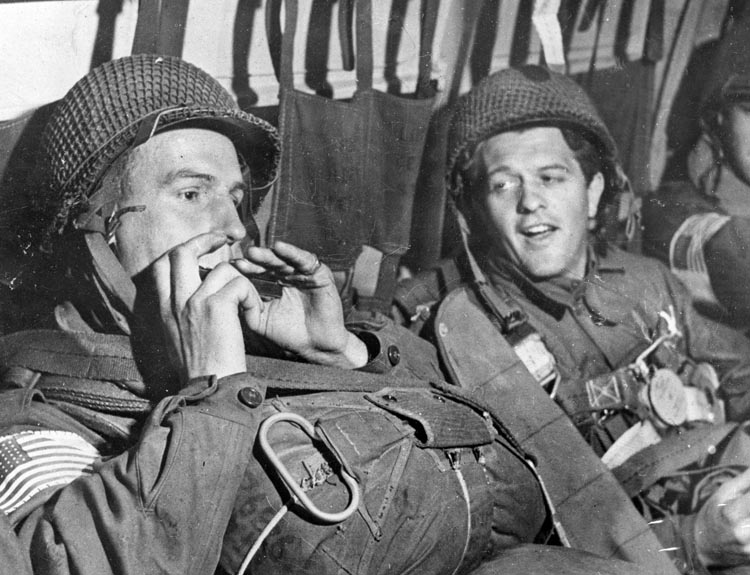
The anti-tank bazooka had received mixed reviews in combat reports, and innovative weapons development debuted during Operation Varsity, including the 57mm and 75mm recoilless rifles. About 100 of them were sent to Europe for distribution to the airborne divisions. The light weapons—the 57mm at 45 pounds and the 75mm at 114 pounds—were designed to pack a powerful punch with much less difficulty than the deployment of the 75mm pack howitzer or standard artillery pieces. As their names implied, the guns were easier to handle since their recoil was absorbed internally. The 57mm weapon could even be fired from a trooper’s shoulder.
On the morning of Operation Plunder/Varsity, Field Marshal Montgomery was obliged to entertain Prime Minister Winston Churchill and Field Marshal Sir Alan Brook, Chief of the Imperial General Staff. Although their presence was annoying, Montgomery endeavored to keep the high-level visitors close to avoid their interference with the operation or an unfortunate incident that might endanger their lives. General Dwight D. Eisenhower, Commander-in-Chief Allied Expeditionary Force, was a spectator from a separate location, as was General James Gavin of the 82nd Airborne Division, who had not previously witnessed such a large-scale airborne deployment in which he was not a participant.
Gavin called the show “an awesome spectacle.” In addition, Generals Ridgway and Brereton watched from the west bank of the Rhine.
Although planners believed that the distance from the amphibious landing zones on the east bank of the Rhine to the anticipated positions of the airborne troops was acceptable, another reason for the airlift to occur during daylight hours was to give the ground assault a head start, compressing the timeframe for a link-up. The first planes in the Operation Varsity airlift were those of the 61st, 315th, and 316th Troop Carrier Groups, which began clawing their way into the air at 7:09 AM on March 24, bearing troopers of the 6th Airborne from Wethersfield, Chipping Ongar, and Boreham.
The Americans got into the air at 7:25 AM, as pathfinders leading the veteran 507th Parachute Infantry Regiment (PIR) lifted off from Chartres, one of 12 airfields located near Paris that were designated for Operation Varsity.
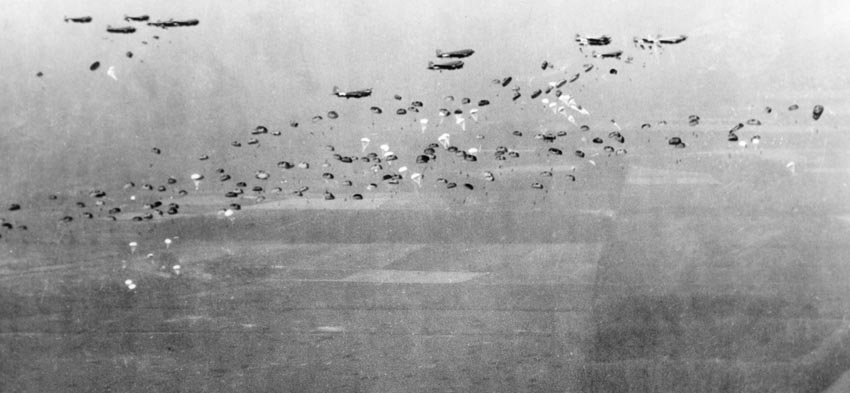
Just before 10 AM, the first American planes reached their designated drop zones. A thick, drifting haze, much of it caused by the smokescreen laid to cloak the amphibious assault across the Rhine, obscured the ground below the transports. The pilots missed their drop zone northwest of Wesel, and the first paratroopers descended in a widely dispersed area one and three-quarter miles northwest, close to the town of Diersfordt.
Two groups of 1st Battalion, 507th troopers, one under Colonel Edson Raff, the regimental commander, and the other under Major Paul Smith, commanding the 1st Battalion, immediately went into action. Raff’s men eliminated machine-gun nests and engaged in sharp firefights with German infantry, taking time to disable a battery of five 150mm guns and capture the enemy artillerymen. By the time they had secured their objective of high ground in the nearby woods, Raff and company had captured 300 Germans, and nearly 100 enemy soldiers were dead or wounded. Major Smith’s men silenced several antiaircraft batteries, and the remaining battalions of the 507th hit their drop zones accurately.
The 3rd Battalion, 507th, headed for Diersfordt and the ancient castle that dominated the town. When the paratroopers stepped toward the village, they were confronted by a pair of German tanks rolling out of the castle and down the road with heavy forest on either side. An accurate anti-tank grenade shocked the crew of the lead tank, and these Germans promptly surrendered. In the first successful use of the 57mm recoilless rifle in combat, other troopers set the second tank ablaze with a direct hit.
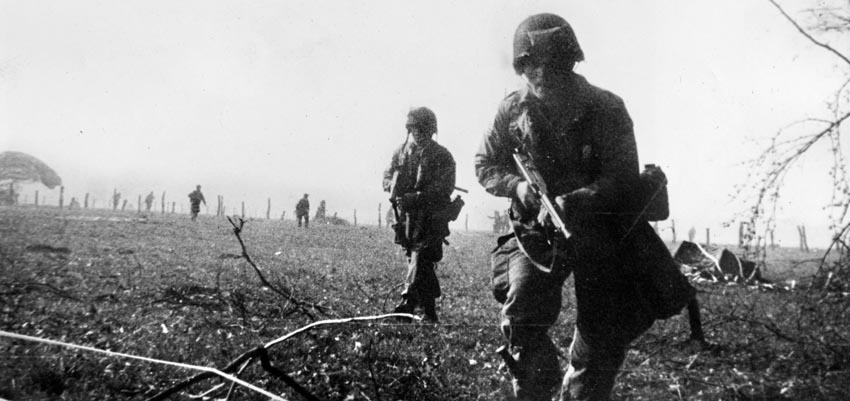
While two companies of paratroopers kept the Germans pinned down inside buildings in the town, Company G stormed the castle, clearing it room-to- room. Two hours later, around 3 PM, the structure was secured, and 300 prisoners were captured. Private George Peters of Company G had already sacrificed his life in the landing zone, singlehandedly silencing a German machine gun and scattering enemy soldiers that were firing on his fellow troopers before he was killed. He received a posthumous Medal of Honor.
As night fell, the 507th PIR was firmly established, with substantial artillery support along the edge of the forest near Diersfordt, and paratroopers had linked up with the British 1st Commando Brigade in Wesel.
The last three American paratrooper serials carried the 513th PIR, commanded by Colonel James W. Coutts. By the time the transports carrying the 513th reached their drop zones, German antiaircraft gunners were shaking off the effects of pre-Varsity bombing. Thick fog still shrouded the landscape. The three battalions of the 513th were dropped over a mile from their assigned zones, one of them coming down in the 6th Airborne sector near the village of Hamminkeln.
When Company E attacked a fortified building in Wesel, Pfc. Stuart Stryker ran forward and was cut down by enemy machine-gun fire 25 yards from the German position. Stryker’s rush created a diversion that allowed other troops to assault the building, capturing 200 Germans and freeing three American airmen who had been held prisoner. Stryker received a posthumous Medal of Honor.
The troopers of the 513th PIR were subjected to enemy small-arms fire during their descent and while still in their parachute harnesses. Nevertheless, they organized and fought off the Germans, battling southward toward their assigned objectives and taking out two batteries of 88mm guns, a self-propelled gun, and a pair of enemy tanks along the way. While one battalion secured the landing-zone perimeter, the other two swept the wooded area north of Diersfordt and established a line along the Issel River at the eastern edge of the operations zone.
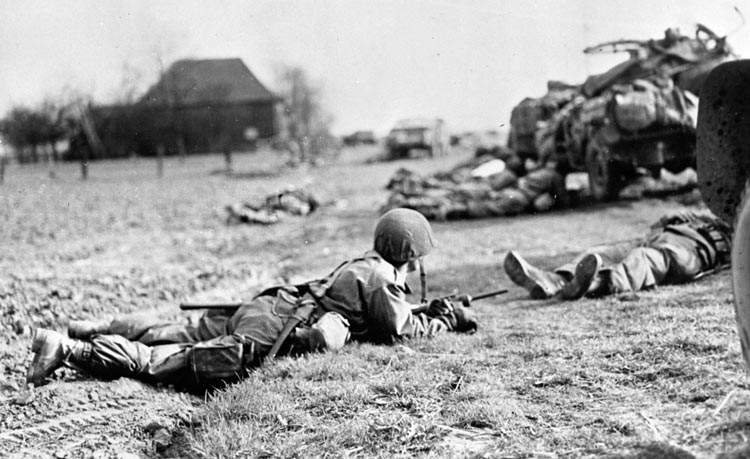
Within half an hour of landing on their assigned drop zone southwest of Hamminkeln, the troopers of the 466th Parachute Field Artillery Battalion were in action against the Germans despite the fact that they had encountered devastating enemy rifle and machine-gun fire as they came down. One battery had lost all its officers killed or wounded, but the troopers had captured 10 enemy 76mm guns by noon.
Glider operations fared better in terms of reaching their assigned landing zones; however, a number of the aircraft were riddled with bullets and shells in the air and after landing. Nevertheless, the action of the 194th Glider Infantry is indicative of the outstanding offensive effort of March 24.
Within two hours of landing, the troopers of the 194th cleared the Issel River and Issel Canal of enemy soldiers, and two glider field-artillery battalions were in action. By the end of the day, the 194th had destroyed or captured 37 enemy artillery pieces, 10 20mm antiaircraft guns, two flakwagens, and 10 tanks while capturing 1,150 prisoners.
The glider pilots of the 435th Group took up their rifles and fought as an infantry company, holding a crossroads northeast of Wesel against an enemy counterattack. With the assistance of two antiaircraft batteries, the pilots waited for the enemy to come dangerously close before unleashing a devastating single volley that broke the back of the advance and left 50 Germans dead and a tank destroyed.
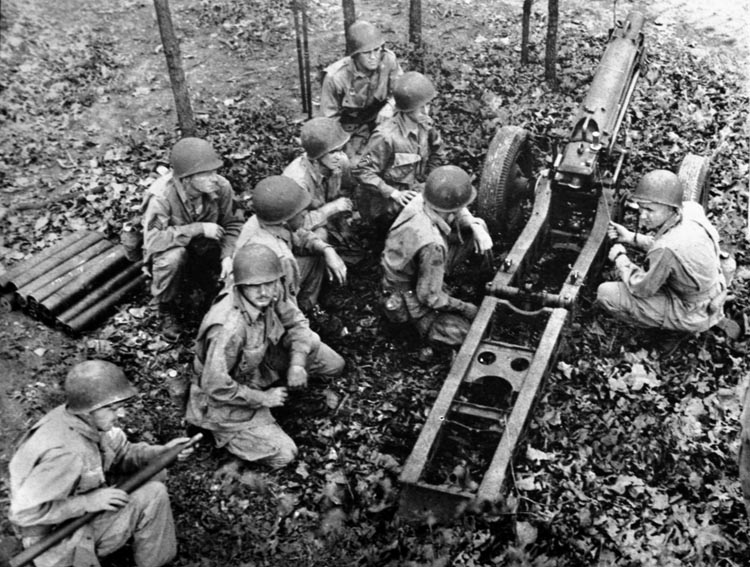
As the American and British airborne units seized their objectives and linked up with ground forces, the contribution of Operation Varsity to the successful crossing of the Rhine was already being evaluated against its cost in men and materiel. Much had been achieved with the elimination of German positions in the Diersfordter Wald, and the enemy had suffered serious casualties. The airborne troops had all been delivered by 12:30 PM, along with more than 100 artillery pieces and nearly 700 vehicles.
Operation Varsity was an impressive logistical achievement, and there was overall agreement that the airborne phase of Operation Plunder had aided the ground advance. In a single day, the 17th Airborne Division had lost 159 men killed, 522 wounded, and 840 men missing in action, while the airmen of the IX Troop Carrier Command had suffered 194 dead and wounded and another 163 missing. The British 6th Airborne had suffered 2,400 casualties.
More than 50 gliders and at least 44 transport aircraft were destroyed, and 332 were damaged. One of the most disturbing aspects of the airdrop had been the performance of the Curtiss C-46 Commando transport aircraft. Substantially larger than the C-47, the Commando was fast and had exit doors on both sides of its fuselage but lacked self-sealing gasoline tanks. When the integrity of the C-46’s fuel tanks was compromised, high-octane aviation fuel gushed along the wings and collected at the wing roots and fuselage. A single spark might set off a catastrophic explosion. During Operation Varsity, 19 of the 72 participating C-46s were shot down, and 38 others were damaged.
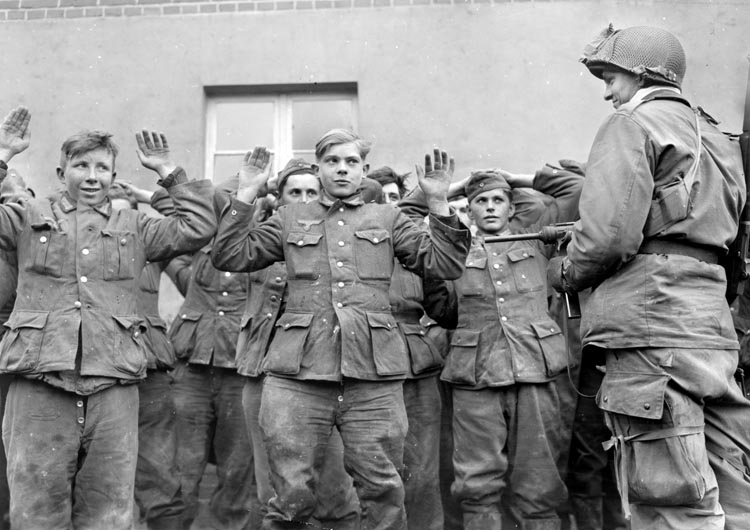
General Ridgway issued orders that the C-46 was not to be used in future airborne operations. In fairness, it should be noted that the C-46 presented a large, slow-flying target at low altitude in daylight. Under such circumstances, the losses were not necessarily due to the lack of self-sealing fuel tanks. They were the predictable result of a command decision to deploy them in the first place.
While some contemporary observers have concluded that an airborne operation was not necessary to support Montgomery’s crossing of the Rhine, Operation Varsity was nevertheless successful. Lingering detractors, however, remain firm in their assertions that ground troops should have been able to capture the objectives assigned to the airborne within a reasonable period and with perhaps fewer casualties. The depth of the bridgehead established by the 30th Infantry Division at Wesel was not substantially enlarged by airborne troops, and the speed of bridge construction was not appreciably enhanced.
During the night of March 24, the troopers of the 17th Airborne Division repulsed sporadic German counterattacks. The next day, they subdued pockets of resistance. In the afternoon, the division crossed the Issel River and advanced to the nearby autobahn. By the morning of the 26th, the division was attacking with artillery and tank support, advancing six miles east of Wesel in two hours, taking a bridge across the Lippe River at Krudenberg, and linking up with the Ninth Army.
On the morning of March 27, General William Miley, commander of the 17th Airborne Division, ordered a broad advance toward Dorsten with the words, “This is a pursuit.”
Around midnight, the British 6th Guards Armoured Brigade passed through the 17th Division as Montgomery’s spearheads plunged deeper into Germany against crumbling resistance. The troopers of the 17th Division hopped aboard the British Churchill tanks, rode into Dorsten 14 miles east of Wesel, and advanced another 17 miles.
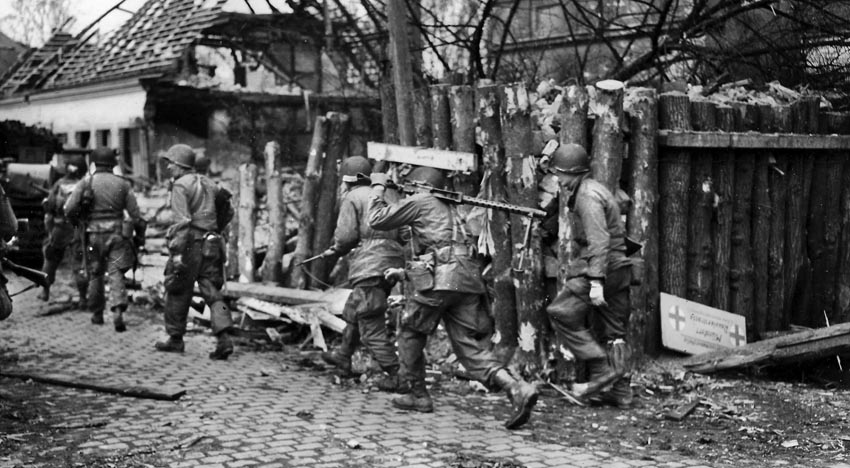
The stark reality of the German collapse and its massive scope is well illustrated by the casualty figures of the 17th Airborne Division. During two days of action from March 24-26, the division lost 231 troopers killed and 670 wounded. In the next five days, losses amounted to only 74 killed and 102 wounded, including 40 who had been previously listed as missing.
With the end of the war only weeks away, the 17th Airborne Division continued its rapid movement, capturing Haltern on March 29 and the city of Münster on April 2. During the fighting to reduce the pocket of German resistance in the Ruhr, the 17th relieved the 79th Infantry Division, crossing the Rhine-Herne Canal on April 6 and establishing a bridgehead as a springboard for the attack on the city of Essen, the center of Krupp steel production, which fell on April 10.
By the end of the month, the 17th Airborne Division had ended active operations and assumed military government duties in northern Germany. Relieved by British troops in mid-June, the division was deactivated, and its personnel reassigned to the 82nd and 13th Airborne Divisions, the latter preparing for possible deployment to the Pacific.
Author Michael E. Haskew is the editor of WWII History Magazine. He is the author of numerous books and articles related to World War II and resides in Chattanooga, Tennessee.
